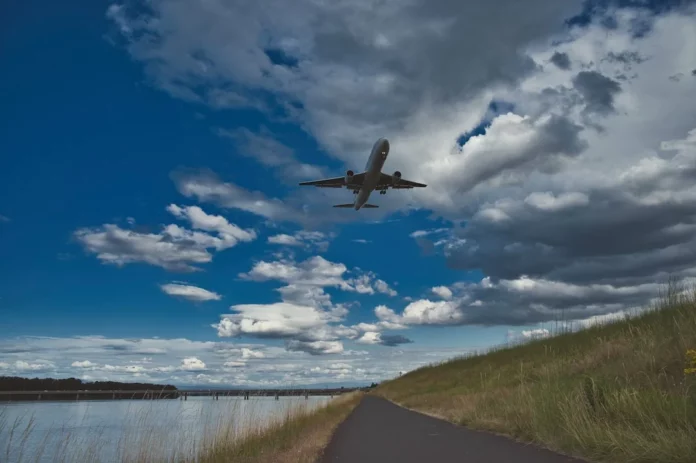In aviation, landing distance required (LDR) refers to the minimum distance an aircraft needs to come to a complete stop from the point it touches down on the runway. It is a critical metric that pilots and aviation authorities use to ensure safe and efficient landings. The landing distance required depends on numerous factors, including the aircraft’s weight, speed, wind conditions, runway surface conditions, and braking capabilities. Understanding and accurately calculating the LDR is essential for pilots to ensure a successful landing and avoid any potential accidents or incidents.
Calculating the landing distance required involves considering several key elements, such as the ground roll and the total stopping distance. The ground roll refers to the distance an aircraft travels from the moment it touches down until the nose wheel firmly touches the ground. The total stopping distance, on the other hand, includes both the ground roll and the distance required for the aircraft to come to a complete stop after the nose wheel touches down.
Contents
Factors Affecting Landing Distance Required
Several factors have a significant impact on the landing distance required for an aircraft. Let’s take a closer look at each of these factors:
1. Aircraft Weight
The weight of an aircraft is one of the most critical factors in determining its landing distance required. Heavier aircraft require longer distances to come to a complete stop due to their increased inertia. The higher the weight, the more energy the aircraft possesses, making it more challenging to slow down. Additionally, heavier aircraft may require higher approach speeds, which in turn affects the deceleration and braking capabilities during the landing process.
For example, a fully loaded commercial airliner will have a significantly longer LDR compared to a small private aircraft. Pilots need to consider the weight of their aircraft and its impact on the overall landing performance to ensure a safe landing.
2. Speed and Wind Conditions
The speed at which an aircraft lands and the wind conditions at the time of landing also play a crucial role in determining the landing distance required. Higher landing speeds require more distance to slow down and come to a stop. Conversely, lower landing speeds can reduce the LDR, as the aircraft’s deceleration and braking capabilities are more effective at lower speeds.
Strong headwinds can assist in reducing the LDR by providing additional drag and resistance, aiding in the aircraft’s deceleration. Conversely, tailwinds can increase the LDR by reducing the effective headwind component experienced by the aircraft, potentially decreasing the overall deceleration and braking performance.
Effective management of speed and wind conditions is crucial for pilots to optimize the landing performance and ensure a safe touchdown.
3. Runway Surface Conditions
The condition of the runway surface is another significant factor that affects the landing distance required. Runways with slippery surfaces, such as wet or icy runways, increase the LDR due to reduced frictional forces between the aircraft’s tires and the runway. This reduction in friction reduces the effectiveness of the braking action and the aircraft’s ability to decelerate.
Conversely, dry runways provide better traction and increase the effectiveness of the braking action, reducing the overall LDR. Pilots must take into account the runway surface conditions and adjust their approach and landing techniques accordingly to ensure a safe and controlled landing.
Calculating Landing Distance Required
Accurately calculating the landing distance required involves considering various factors and using specific aircraft performance data. Aviation authorities, aircraft manufacturers, and pilots rely on standardized procedures and performance charts to determine the LDR for different aircraft types.
One commonly used method for calculating the landing distance required is through the use of performance charts provided by the aircraft manufacturer. These charts take into account factors such as aircraft weight, approach speed, landing configuration, and runway conditions. By referencing the appropriate chart and inputting the relevant data, pilots can determine the LDR for their specific aircraft in specific conditions.
Alternatively, some aircraft are equipped with on-board performance computers that automatically calculate the landing distance required based on real-time data inputs, such as aircraft weight, speed, and wind conditions. These systems provide pilots with accurate and up-to-date information, aiding in their decision-making process during landing.
Pilots should always consult the aircraft’s operating manual and follow the recommended procedures for calculating and verifying the LDR to ensure the highest level of safety during landing.
Conclusion
The landing distance required (LDR) is a critical metric in aviation that determines the minimum distance an aircraft needs to come to a complete stop after touchdown. Factors such as aircraft weight, speed, wind conditions, and runway surface conditions significantly influence the LDR. Pilots must accurately calculate the LDR to ensure a safe landing and consider various performance charts or on-board systems provided by the aircraft manufacturer. By understanding and effectively managing the factors that affect the LDR, pilots can enhance their landing performance and maintain a high level of safety in the aviation industry.
For More: What is FCMC in Aviation? (Fuel Control & Monitoring Computer)




